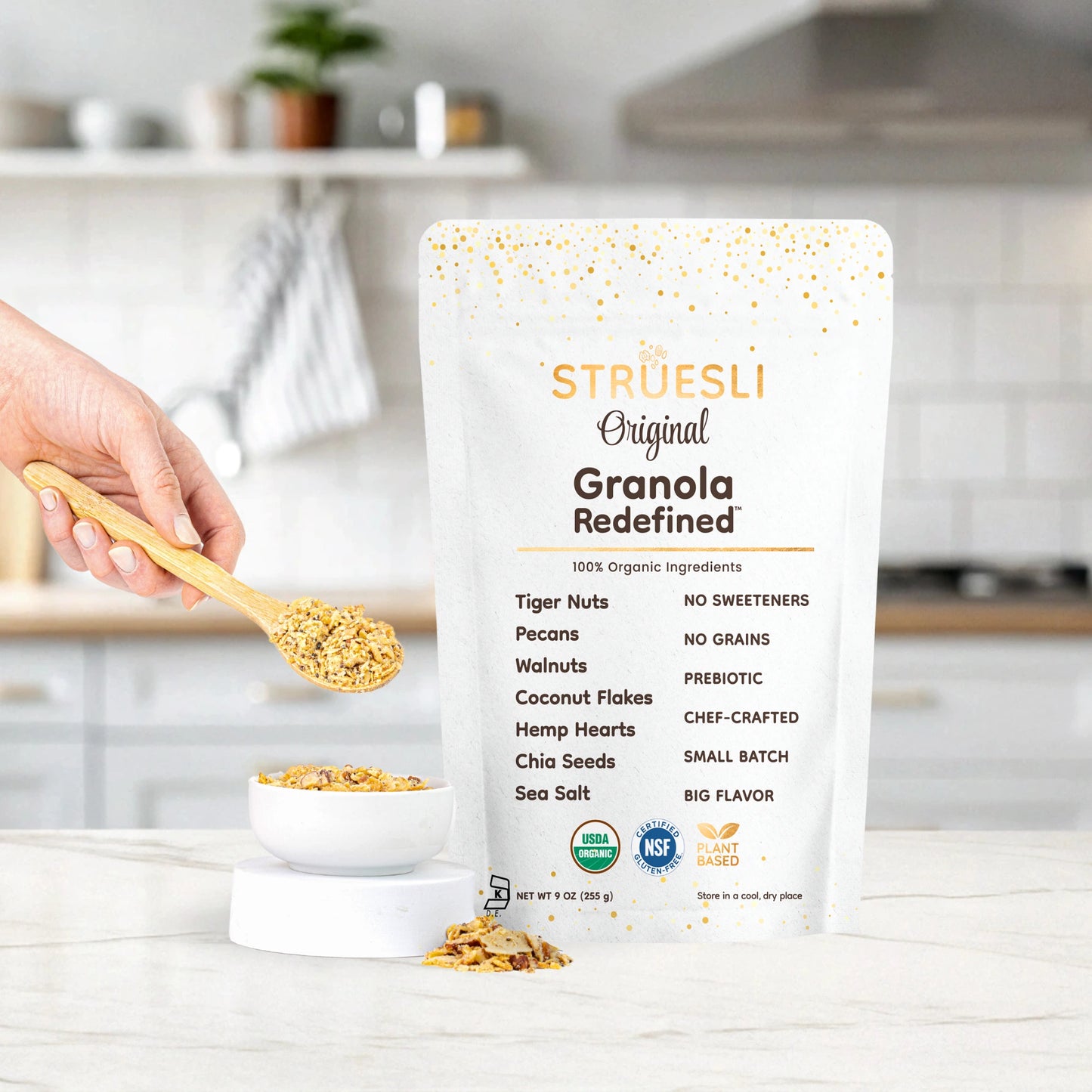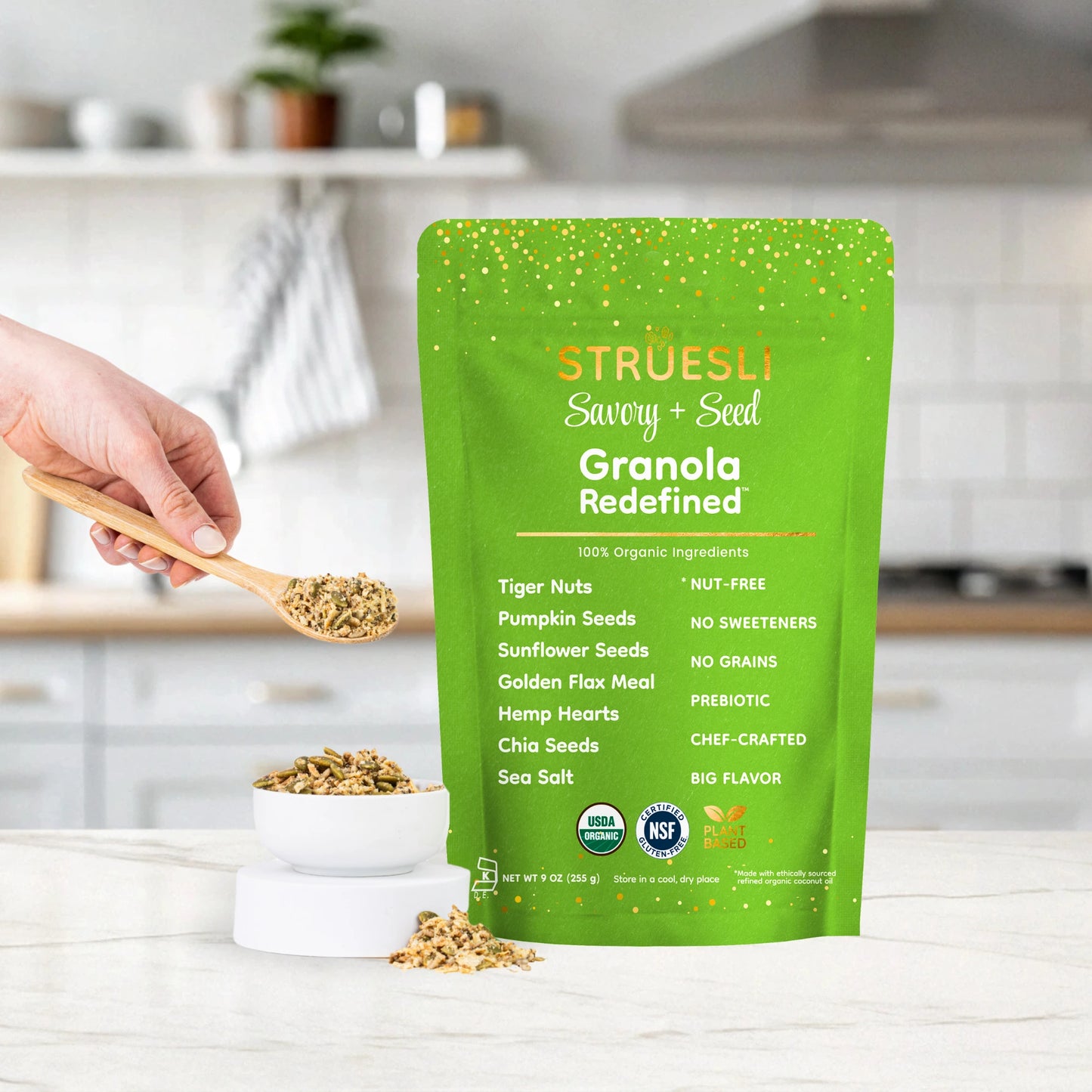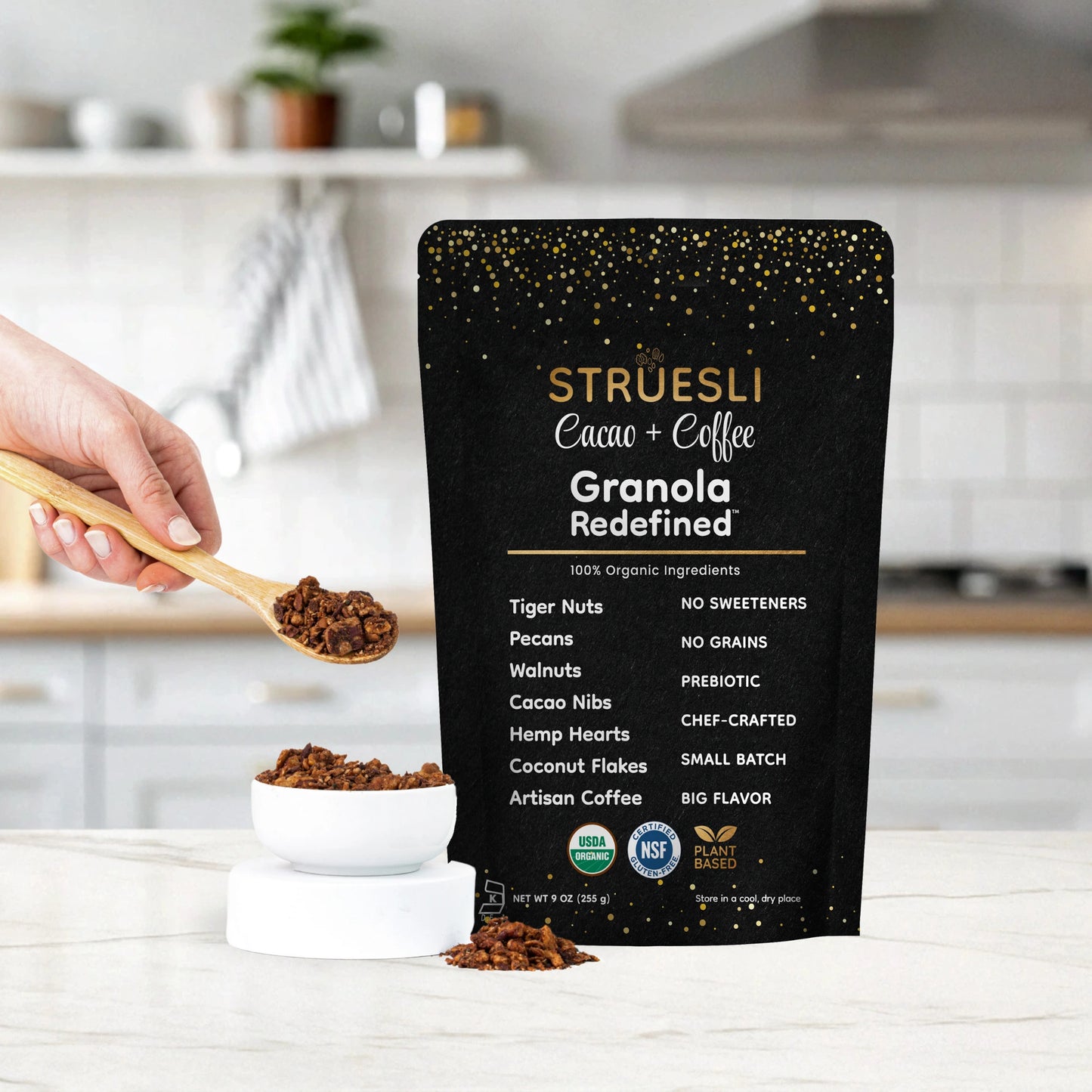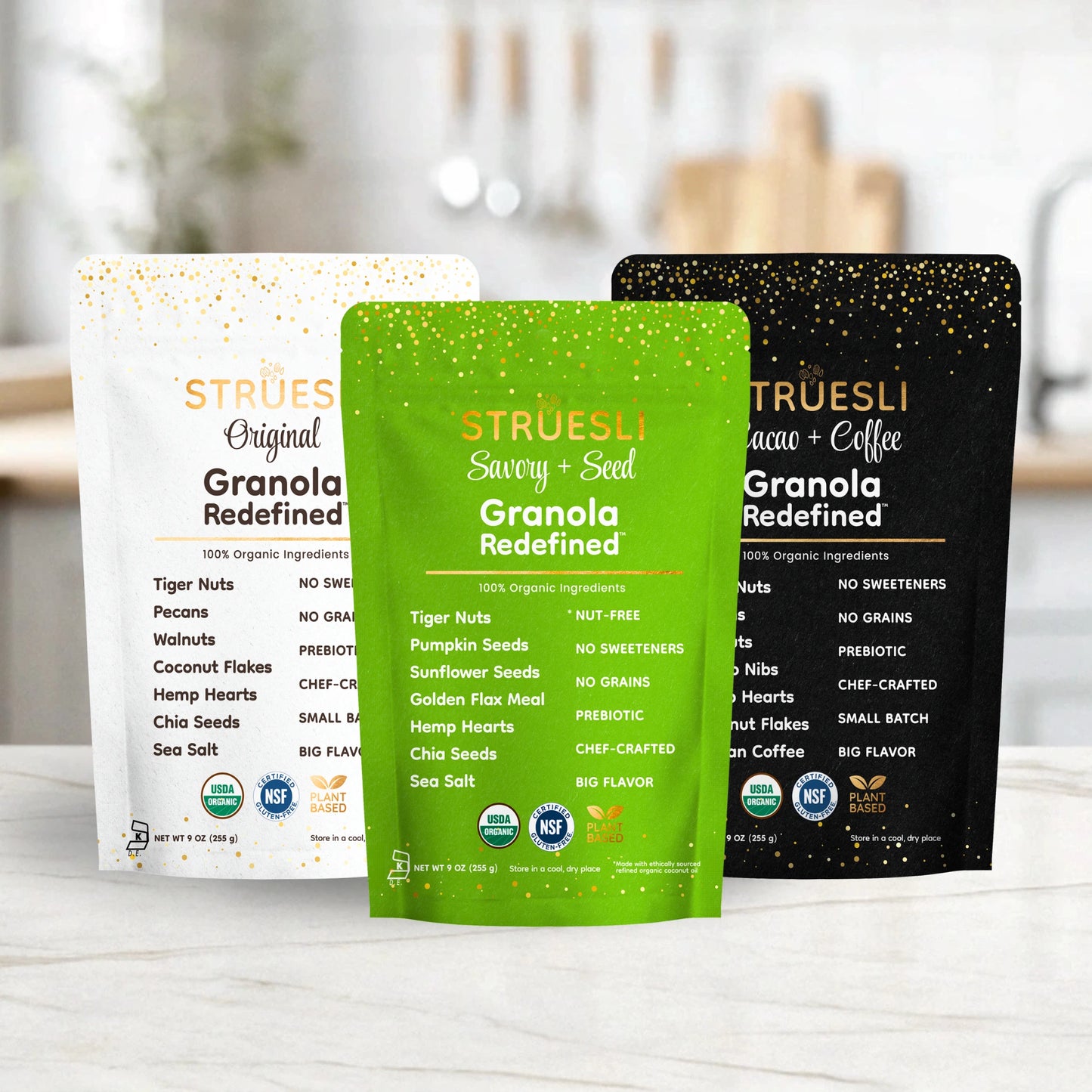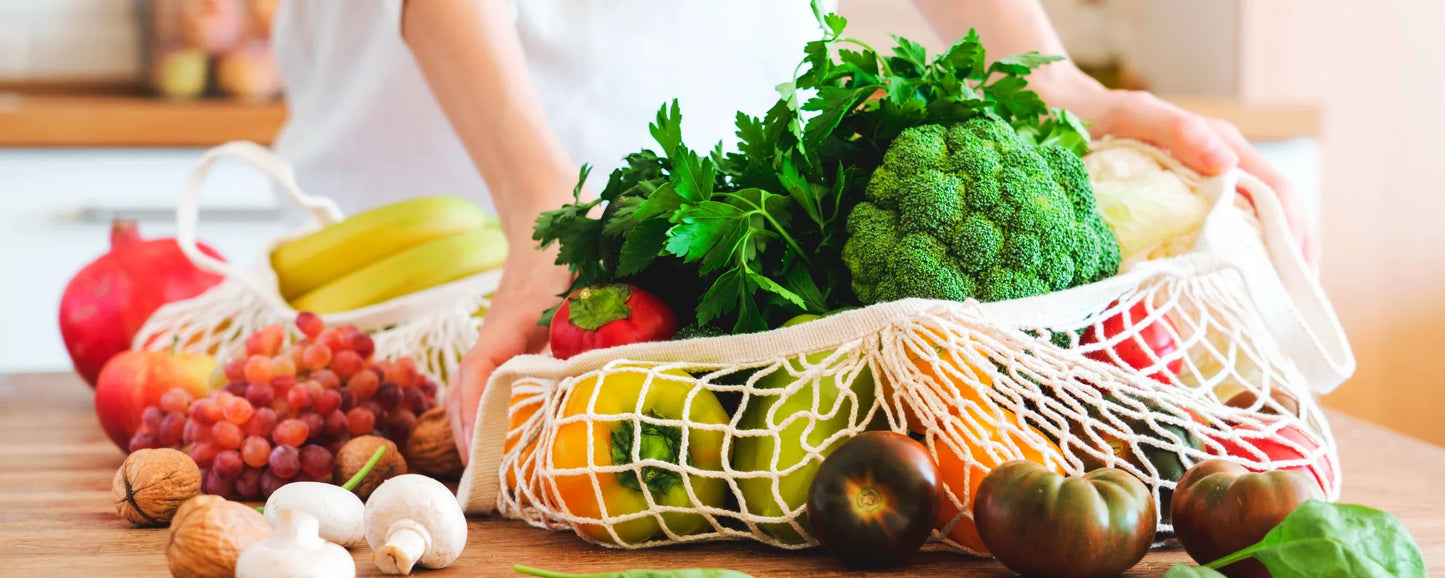
As a registered dietitian and natural products nutrition consultant, I’ve been tracking food trends for many years now. I still love to see how microshifts in the world affect what we eat—and vice versa. The way that I think about a food trend (versus a fad) is that a trend is more meaningful and has deeper roots. They are forces and solutions that truly make a difference in people’s lives. Trends tend to stick with us, even as they evolve from year to year.
A fad, on the other hand, has a period of flash-in-the-pan popularity that fades away pretty quickly. They offer few benefits beyond surface-level entertainment, like bright and pungent flavors, novel ways of being prepared, and an overall fun factor.
From recent years, some examples of food fads would be Dalgona coffee, cloud bread, and sweet potato toast. You may still see these food fads lingering around, but their roots aren’t deep or meaningful enough to make their way onto menus, shelves, websites, and magazines anymore.
Here are the food trends I’m currently tracking and expect to gain popularity through 2025.

Sugar Shake Down
America’s love-hate relationship with sugar continues strong, with nearly 75% of adults now saying they’re trying to avoid or cut back on their sugar intake. Yet still, 3 out of every 4 products you can buy contain sugar, other forms of sweeteners, or both.
According to a new study of nearly 70,000 adults, it’s the sugar-sweetened beverages, like soda, that are the biggest threat to health, and not so much the other sweet foods. That’s why the new year will bring an explosion of lower-sugar soda alternatives, such as cofounder Michelle Obama’s PLEZi, which offers juice boxes and fizzy drinks with no added sugar, and Evolution Real Fruit Sodas, which come from a cold-press juice company that is now in the low-sugar soda game.
Of course, sugar creeps into our diets in many places other than soda, too. And forward-thinking brands, like Struesli Granola Redefined and Seven Sundays are helping to get rid of many of those sugars that are prevalent in things like granola and cold cereal. Struesli is especially unique in the category since it doesn’t have added sugars or sweeteners of any kind making it a natural topping for yogurt, fruit, and more. It makes you wonder why all that sugar has been in granola in the first place?
Prediction: Look for more companies calling out sugar grams and no added sugars on the front of the package. While sweeteners like aspartame and xylitol continue to fall under the health microscope, stevia will likely be the most widely accepted added natural sweetener for 2025 and the near future. At the same time, I expect to see more products taking on salt reduction, especially in snack foods and sauces.

The Future Is Fiber
Health professionals, dietary guidelines, and grannies everywhere have been advising people to get more fiber for decades. Yet still, 95% of Americans don’t get the recommended 25 to 30 grams daily.
Part of that reason, I believe, is because fiber just isn’t all that fun. It’s in things that can be a tough sell for some, like vegetables and beans and drink powders prescribed by gastroenterologists.
But innovative and vibrant brands are giving fiber a fresh face, which intrigues many people who are more in tune with gut health than ever. Who remembers when Poppi, a soda containing 2 grams of fiber per can, purchased a Super Bowl ad last year? And when millennial-favorites like Gwyneth Paltrow and Mindy Kaling backed Olipop, a soda with a whopping 9 grams of fiber per can?
In addition to beverages, fiber is also showing up in more pastas, like 3 Farm Daughters and Fiber Gourmet, more snack bars like Resist and BelliWelli with prebiotic fiber, and even desserts like Halo Top Ice Cream and Rule Breaker Brownies.
Prediction: Move over Metamucil! I think 2025 will bring more fiber supplements made just for women and younger demographics, more snacks and beverages with functional fiber added in, and, hopefully, more use of innovative and naturally fiber-rich ingredients, like the tiger nuts in Struesli, that help pack 5 grams of fiber into a single serving.

With A Side Of Veggies
Though the plant-based movement is still strong, it’s actually hard to say if there really are more or less vegans than there were 10 years ago, a number that seems to hover around 4% or less of the U.S. adult population. My theory is that the most compelling piece of the plant-based movement has always been the part about getting more veggies—and not necessarily the part about eating less meat.
Products that incorporate veggies are popular, whether it’s in a sneaky way to fool kids into eating a bit more greens, or a little more forthcoming way that pairs veggies with its popular sibling: fruits.
And for adults, there are new veggie innovations, like Nature’s Fynd mushroom-based yogurt and microwaveable packs that add convenience and flavors to the highly nutritious lentil-plus-veggies combo.
Prediction: The year will bring more products that tout veggies but don’t shun animal-based foods, often using them in combination. For example, take Actual Veggie’s first non-100% vegan product, a veggie burger with real cheese. Or Choppy Chopped Steak, which is plant-based meat pieces combined with beef tallow, beef collagen, and beef broth.

Convenient Protein
Perhaps the reason that 100% plant-based eating fails to make widespread traction is because protein is a macronutrient that can seemingly do no harm. As Gen-Xers and millennials age, more of them have increased their protein goals. The “get more protein” message seems to be sticking with Gen Z and Gen Zalpha, too. And there’s really not a more efficient way to get those all-important amino acids (the building blocks of protein) and to meet those lofty goals of more than 100 grams daily than there is to incorporate some meat, cheese, dairy, eggs, and poultry.
Products like cottage cheese cups, avocado-egg packs, and salmon-based lunchables have made it cool and convenient to get more protein from whole-food sources. And milk and whey protein isolates have moved beyond smoothies, now being incorporated into pasta sauce, snack balls, mac and cheese, and ice cream bars.
Prediction: Animal-based products coupled with convenience will flourish, as they’re the most efficient way to get those all-important amino acids. But since we can all agree that feedlots, fish farms, and dirt-less chicken lots are inhumane, look for animal-based products that tackle these issues with more responsible sourcing.
More 2025 Food Trends to Watch
In addition to the macrotrends listed above, I’m also keeping my eye on these:
Real-Food Functionality: Look for nutritious products that return to real (ie: incorporating more real fruits, real veggies, real beans, real cheese, real meat) even if they may be dried, powdered, blended, or isolated in order to do so
More Mushrooms: Keep an eye out for fungi and mycelium (mushrooms’ powerful underground network) branching out beyond coffee and supplements
A Sweet And Sour Patch: With the move to retrain palettes away from ultra-sweet, high-sugar foods, look for more sweet combination flavors, such as “swicy” innovations (from hot honey to spicy-sweet cocktails and mocktails) and even more players in the fermentation game (from sourdough-based products to iterations on kombucha)
Happy To Hydrate: There’s no lack of beverage innovation happening at all times, it seems, from the growing non alcoholic beverage category to electrolytes in every combination for every cure. With beverages containing protein, fiber, adaptogens, multivitamins, beauty boosters, and sleep aids, you have to wonder: what’s next?
Written by Jessie Shafer, RD
December 16, 2024

